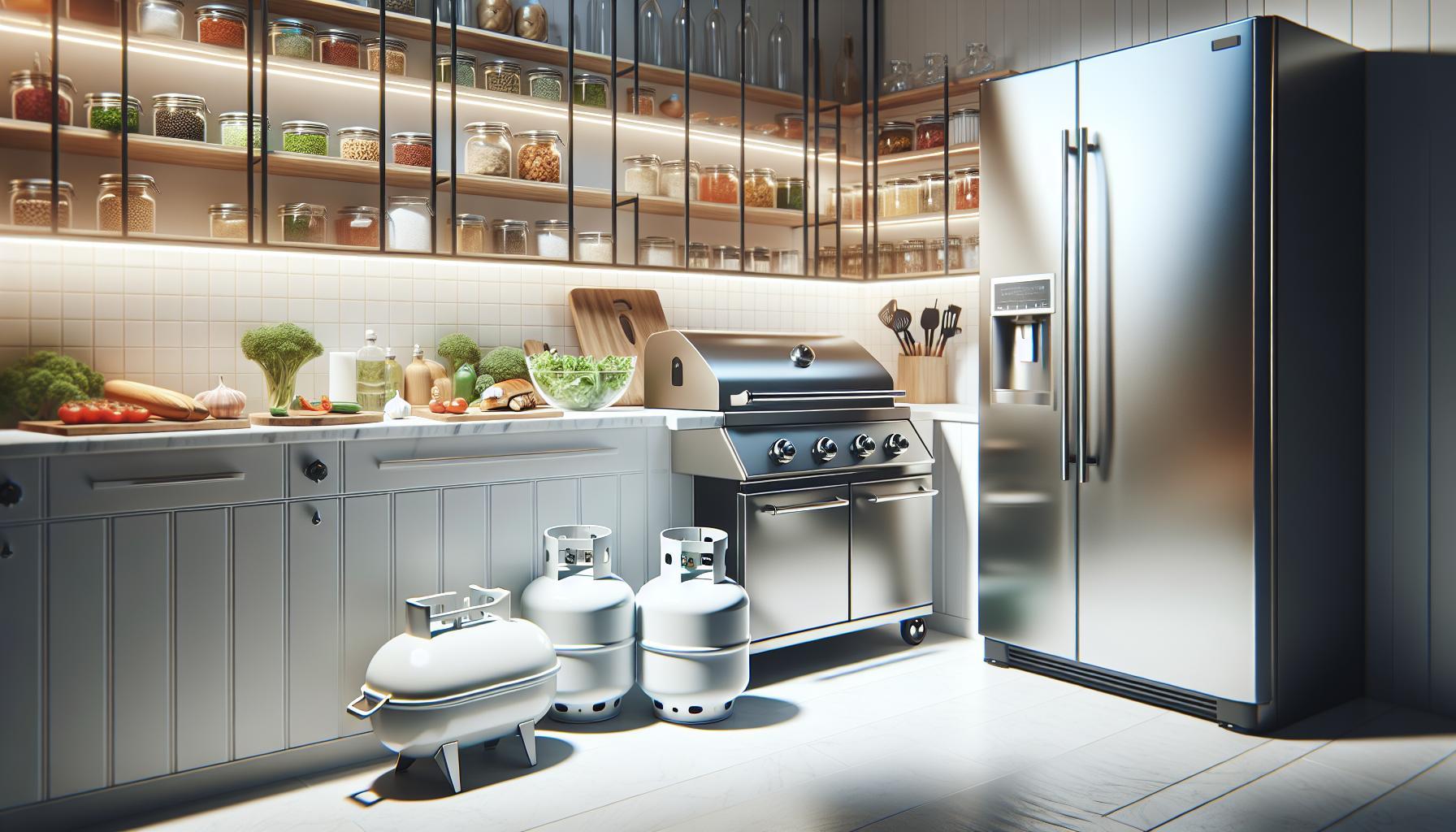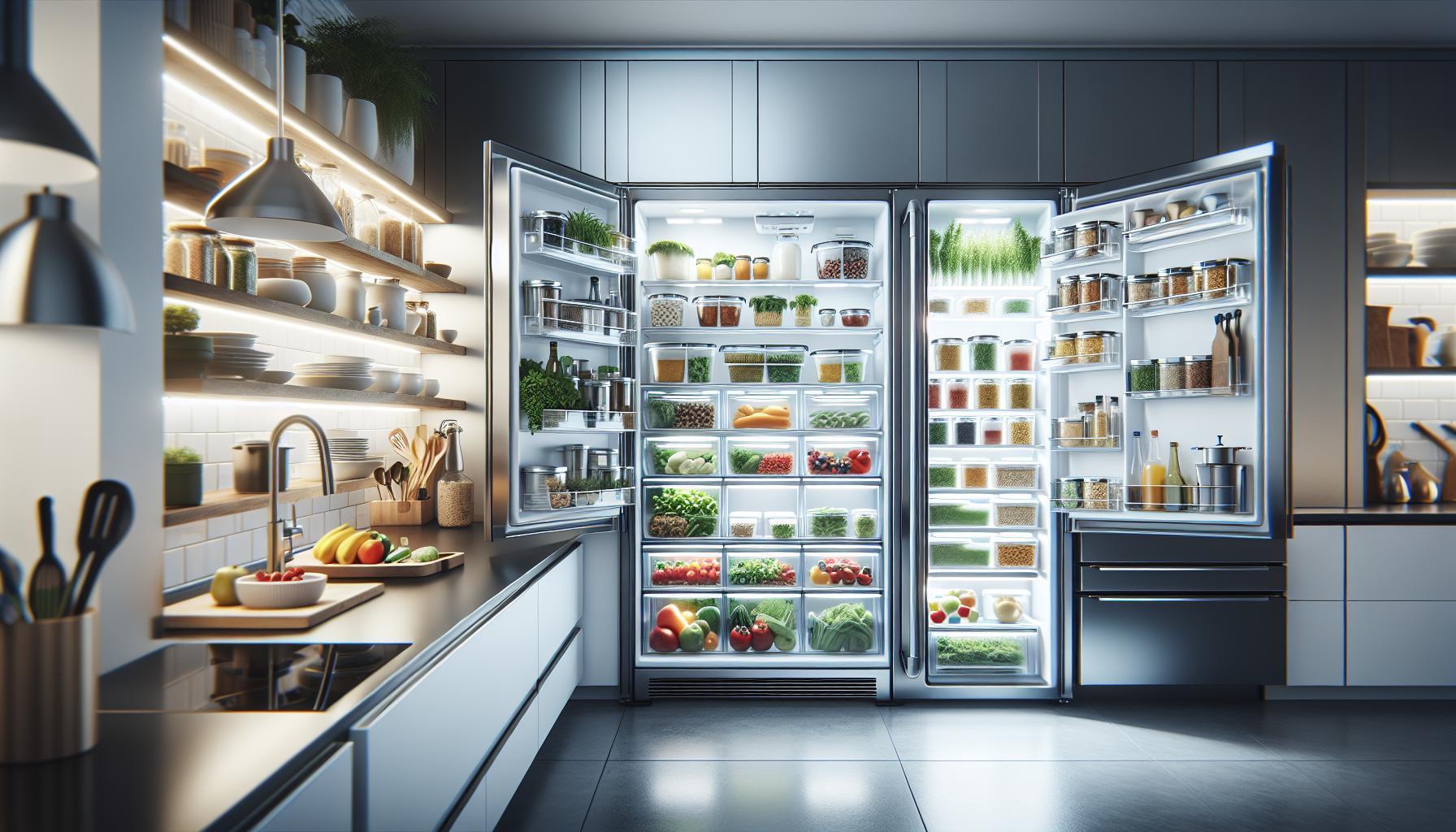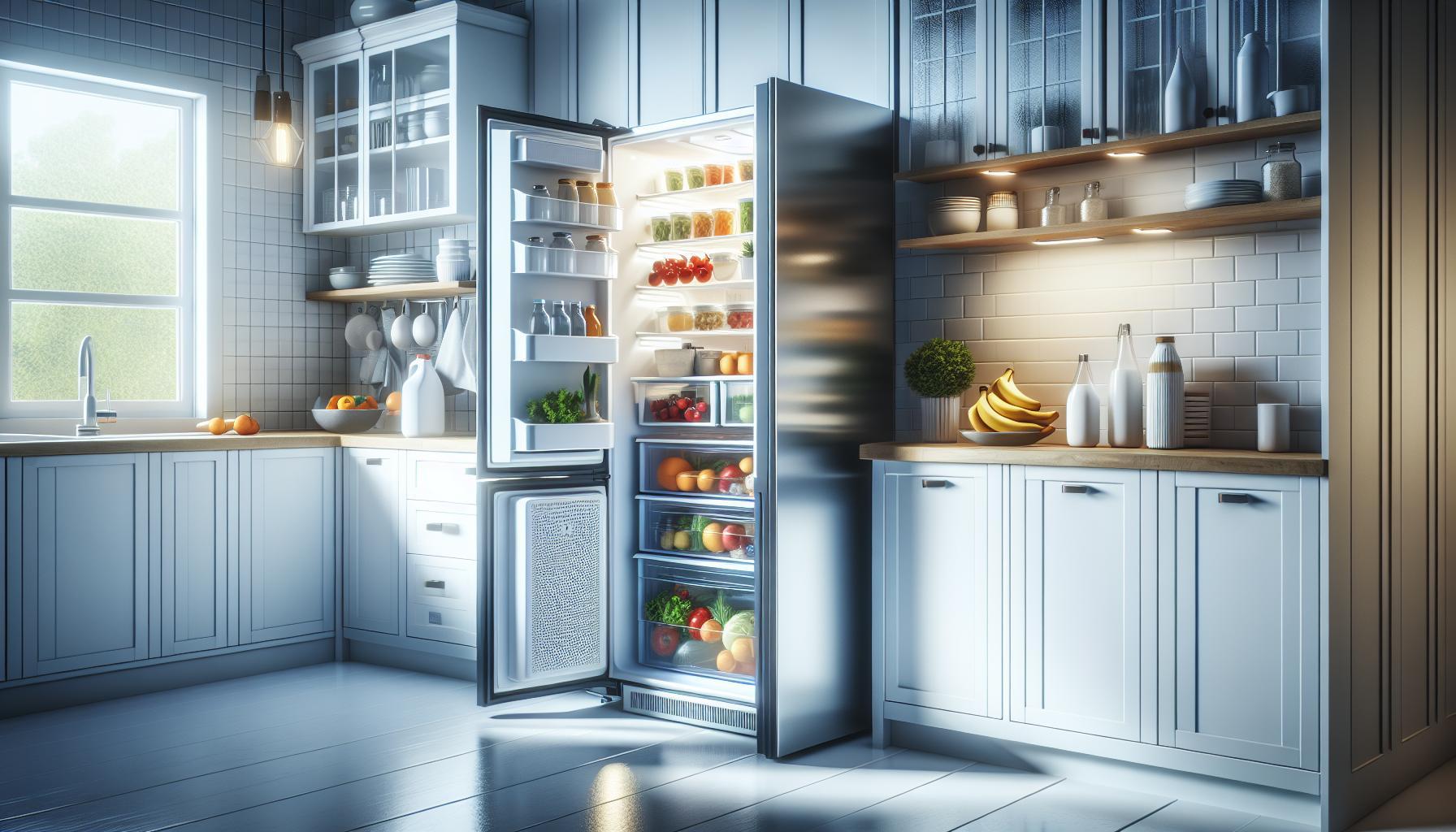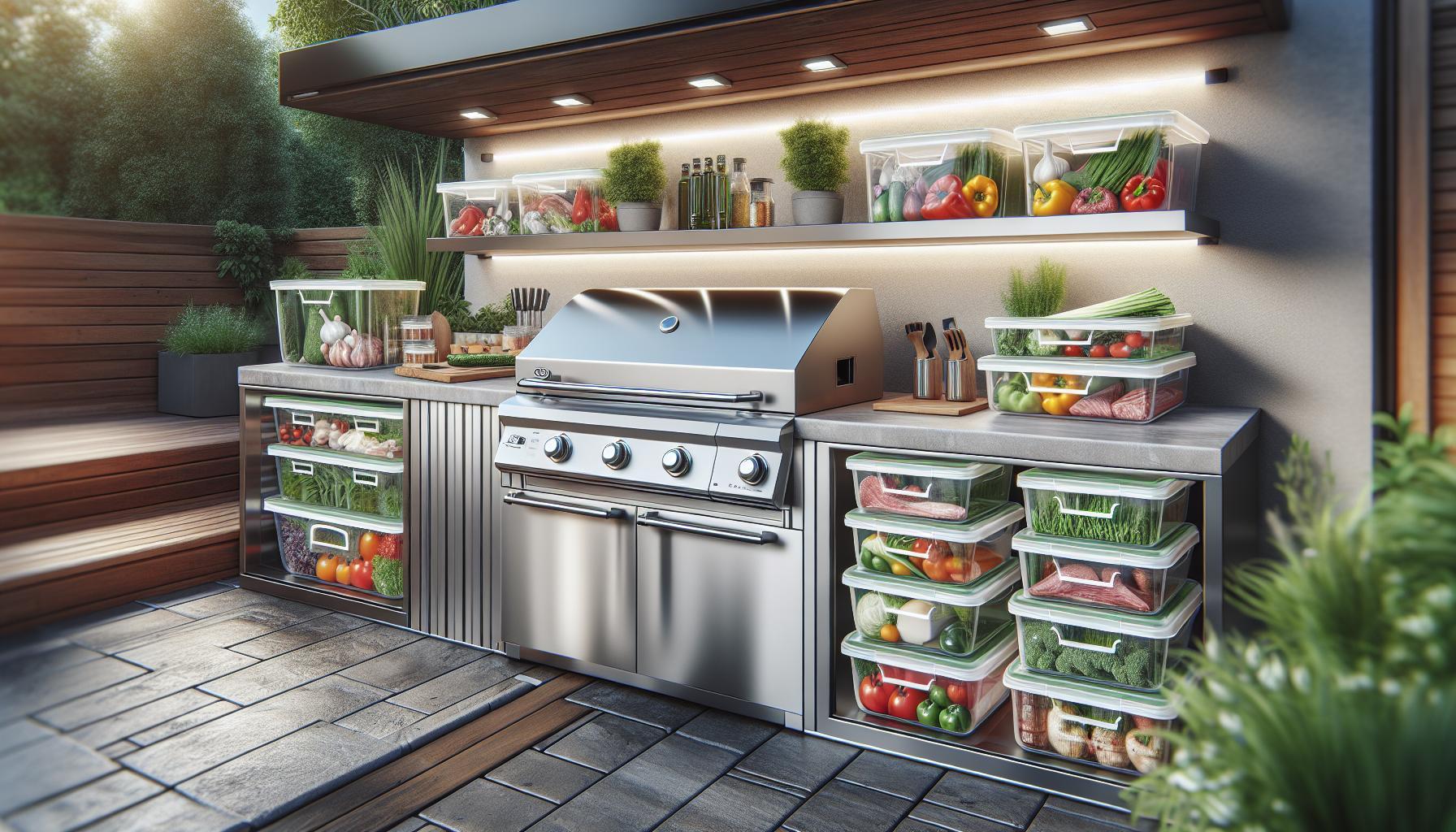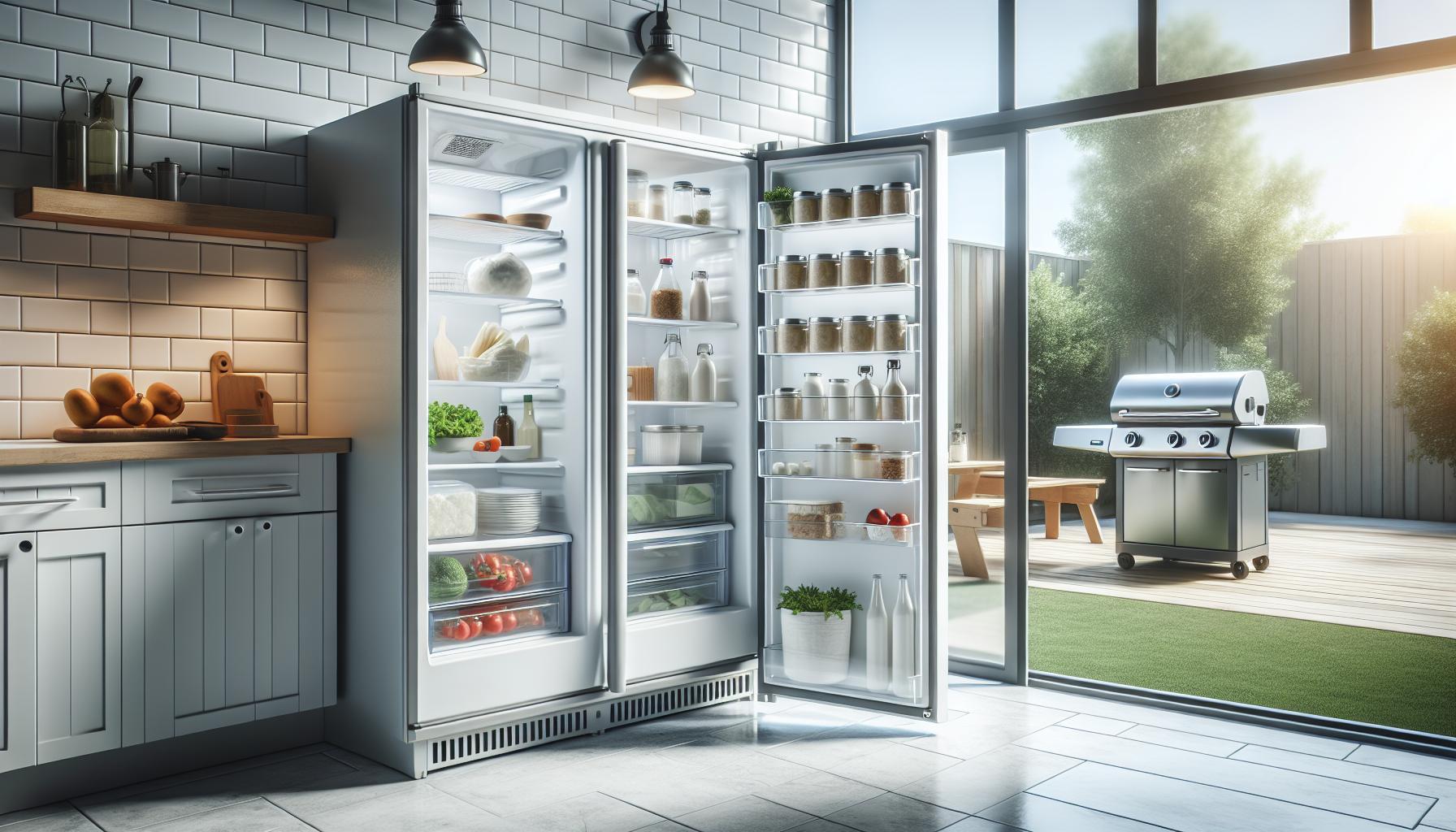Planning the perfect BBQ can turn into a frustrating experience if you’re caught off guard by an empty propane tank. Did you know that the average 20-pound propane tank lasts about 18 to 20 hours of cooking time? Understanding how long your propane tank will last is crucial for seamless grilling sessions, ensuring you never run out mid-cook.
Whether you’re preparing for a weekend cookout or a family gathering, accurately estimating your tank’s lifespan can save you time and prevent unplanned trips to the store. This guide will help you navigate the factors that influence propane usage, allowing you to grill with confidence and without interruptions. Let’s dive in and learn how to optimize your grilling experience!
How Propane Tank Size Affects Usage Time
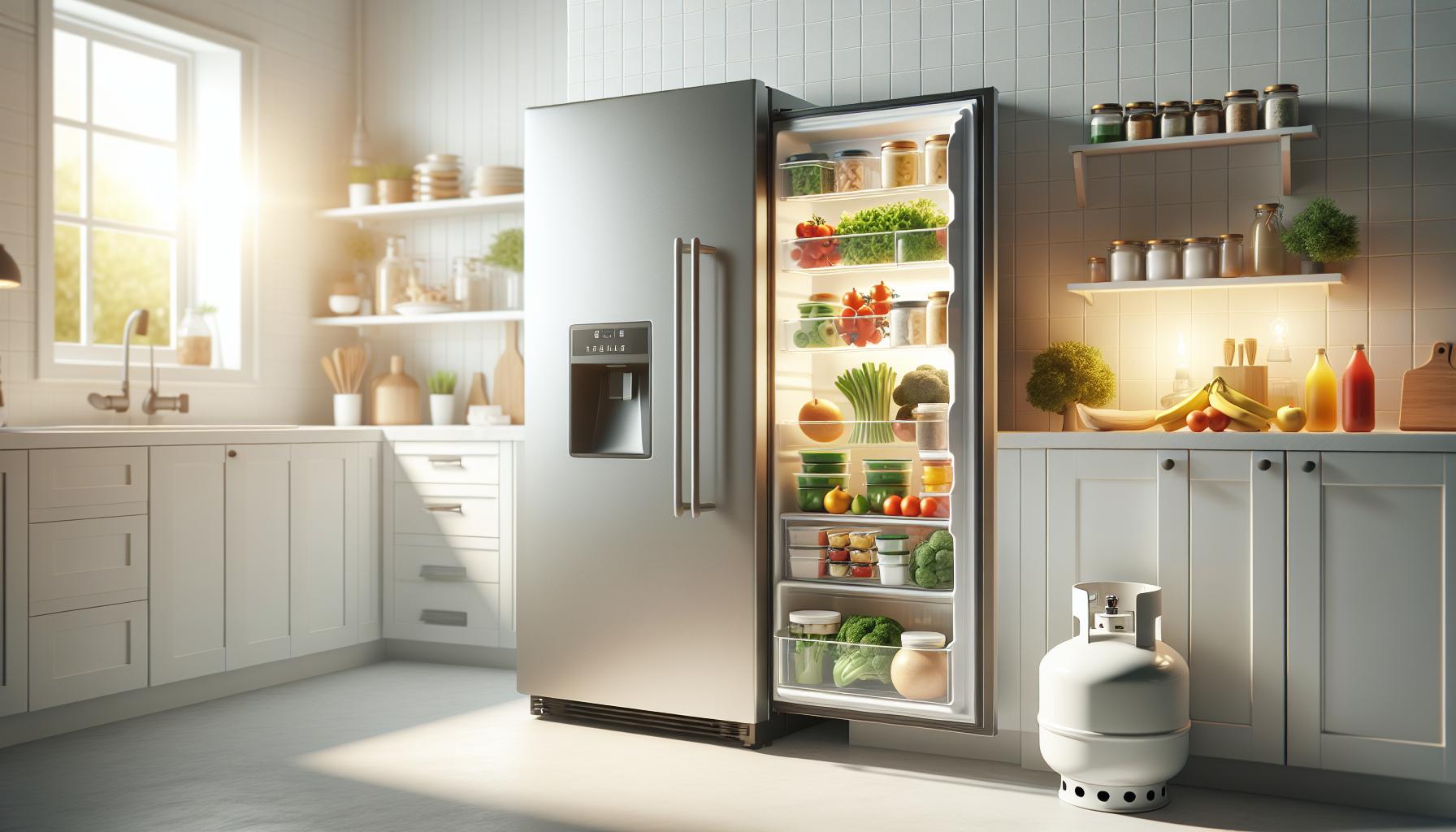
Understanding the relationship between propane tank size and usage time is essential for planning successful barbecues. Propane tanks come in various sizes, typically ranging from 20-pound tanks (the standard for most home grills) to larger 30-pound and 40-pound tanks used for extensive cooking or commercial purposes. The size of the tank directly affects how long you can grill before needing a refill.
For example, a standard 20-pound propane tank holds about 4.7 gallons of propane, which provides approximately 18-20 hours of cooking time at medium heat on a grill that consumes 20,000 BTUs per hour. In contrast, a larger 30-pound tank can last upwards of 30 hours under similar conditions. This means that for longer grilling sessions or when cooking for larger gatherings, opting for a bigger tank can significantly reduce the frequency of refills and ensure you have sufficient fuel for your needs.
When choosing the right tank size, consider factors such as the grill’s BTU rating and how often you host cookouts. Most backyard grilling sessions require the efficiency of a 20-pound tank, while larger events may benefit from a 30-pound or more substantial option. Additionally, if you frequently cook at high intensities or across multiple grilling sessions in one day, a tank that can sustain longer usage becomes invaluable.
In summary, opting for a propane tank that matches your grilling habits can save you time and hassle during BBQs. Always keep track of your propane usage, as this proactive approach will allow you to enjoy your grilling experience without interruptions. Consider having an extra tank on hand for those unexpected gatherings, ensuring your grilling remains a worry-free activity.
Factors Influencing Propane Consumption
Understanding the factors that influence propane consumption is crucial for ensuring smooth and efficient grilling experiences. A number of elements can affect how quickly your propane tank depletes, and being aware of these can help you manage your resources more effectively.
One significant factor is the grill’s BTU (British Thermal Unit) rating. Grills with higher BTU ratings consume more propane, meaning they will deplete your tank faster. For instance, if your grill operates at 30,000 BTUs, it will use approximately 1.5 pounds of propane per hour, which translates to a shorter cooking time compared to a grill at 20,000 BTUs, which only uses around 1 pound per hour. Therefore, knowing your grill’s BTU rating can help you estimate how long your propane will last based on the intended cooking duration and intensity.
Environmental conditions also play a critical role in propane consumption. Windy or cold weather can lead to increased fuel usage, as grills may require additional energy to maintain heat. For example, cooking outdoors in cold temperatures might require the grill to work harder to reach and sustain optimal cooking temperatures, leading to faster propane consumption. Additionally, how you cook-using direct heat or indirect heat, for instance-can change the amount of propane consumed. Direct grilling usually requires higher temperatures and therefore more fuel compared to indirect grilling.
Finally, cooking habits and meal types can significantly influence propane use. Larger meals or longer cooking times will require more fuel. If you’re grilling meats that take longer to cook, such as briskets or whole chickens, you may need to keep a closer eye on your propane levels compared to quicker-cooking items like burgers or vegetables. Keeping track of your cooking practices and adjusting them to match your propane supply will help ensure you have sufficient fuel for every occasion.
By considering these factors, you can better manage your propane supply and create a more enjoyable grilling environment without the hassle of unexpected interruptions.
Average Cooking Times for Different Grills
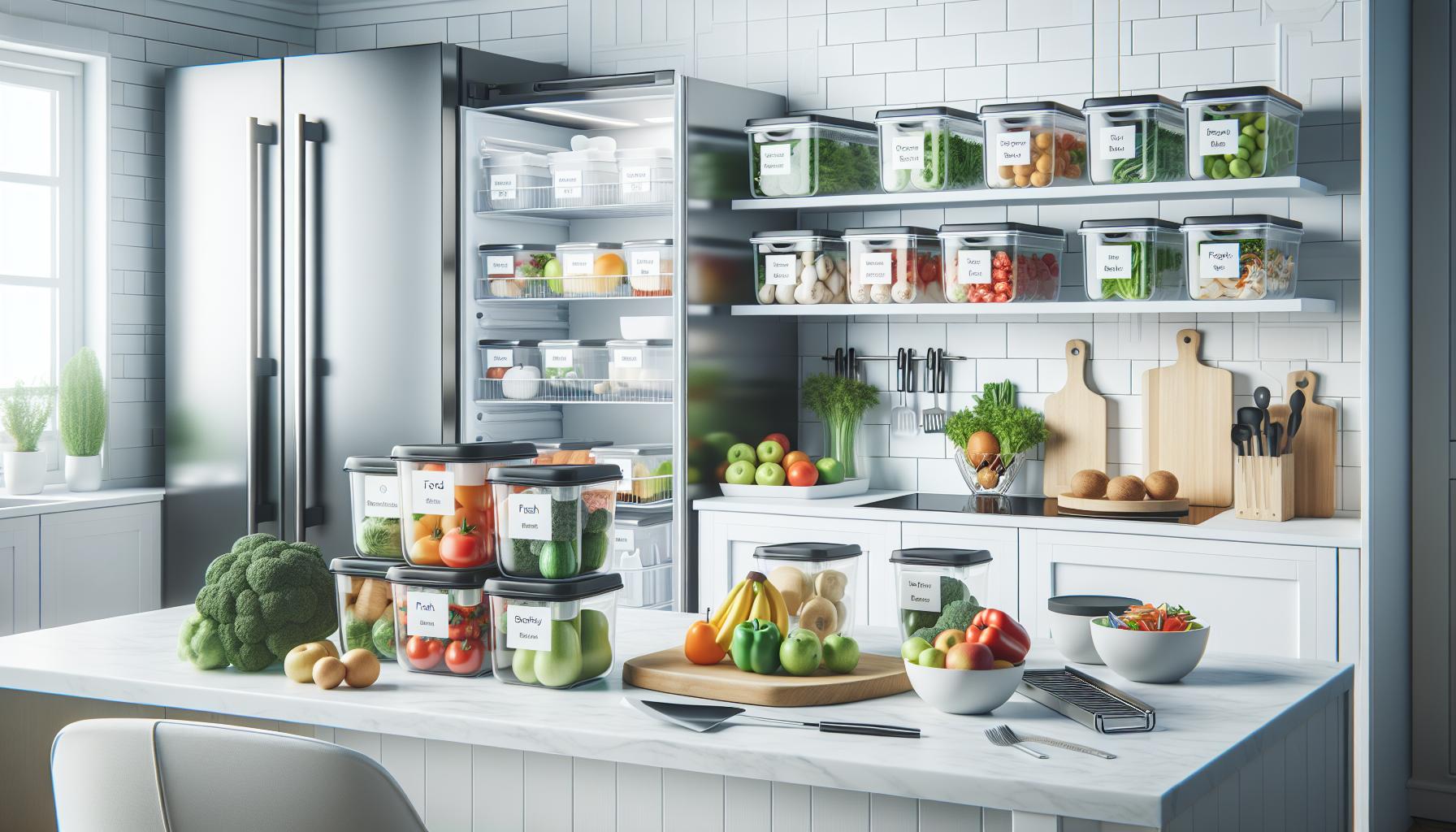
When planning a barbecue, it’s essential to consider how long your grill can run on a full propane tank while efficiently cooking your favorite foods. Understanding helps you gauge the amount of propane you’ll need for your gatherings. A typical 20-pound propane tank contains about 430,000 BTUs, which can keep your grill cooking for several hours depending on its efficiency and design.
Gas grills vary significantly in BTU ratings, which directly affect cooking times. For example, a medium-sized grill with a BTU rating of around 30,000 can typically cook food efficiently for about 12-15 hours on a full tank if set to medium heat. In contrast, a high-output grill with a rating of 50,000 BTUs may only run for about 8-10 hours at a similar setting. This highlights the importance of choosing a grill that matches both your cooking style and your propane consumption needs.
Moreover, the type of food being grilled can also influence cooking times. For instance:
- Burgers and hot dogs: Generally take about 8-10 minutes.
- Steaks: Average around 10-14 minutes, depending on thickness.
- Whole chicken: Requires approximately 1.5 to 2 hours, depending on the size.
- Pork ribs: Can take 4-5 hours if grilled low and slow.
Cooking with indirect heat will also affect the total time and energy needed. If you’re slow-cooking or smoking meats, a grill set to lower temperatures can deplete propane at a slower rate, allowing for longer cooking durations without requiring frequent refills.
By factoring in your grill’s specifications and understanding the cooking demands of the meals you plan to prepare, you can make informed decisions regarding the size of your propane tank and how to plan your BBQs effectively. Proper planning means that you can keep the focus on the food and enjoying time with friends and family, rather than worrying about running out of fuel in the middle of your grilling session.
Calculating How Many BBQs You Can Host
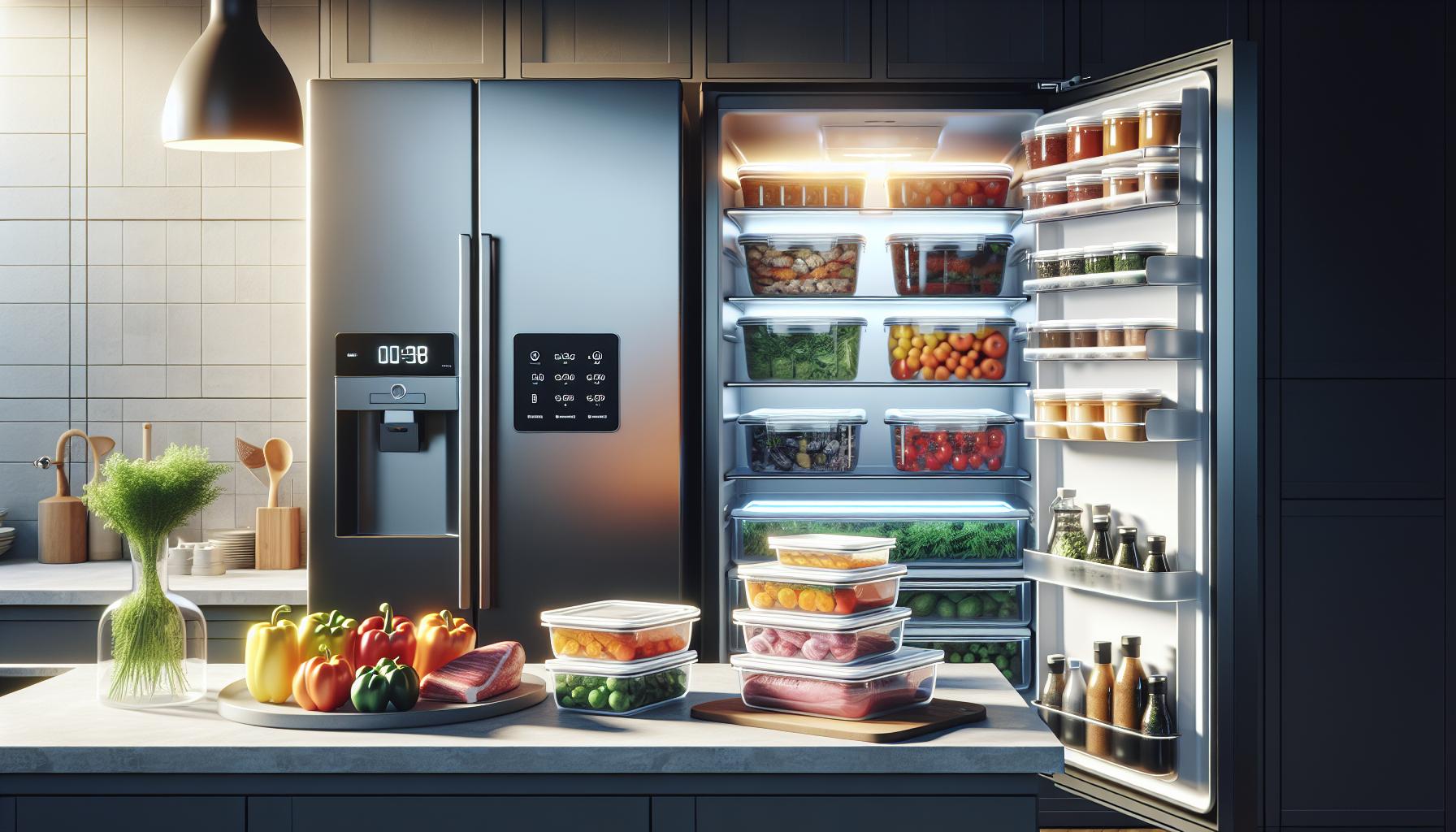
Calculating how many barbecues you can host with your propane tank requires an understanding of both the tank’s capacity and your grilling habits. The size of a typical 20-pound propane tank, which holds about 430,000 BTUs, sets the stage for careful planning. On average, if your grill operates around 30,000 BTUs per hour, you can expect approximately 14-15 hours of cooking time on a full tank. This means you could potentially host several gatherings, depending on the number of guests and the type of food being prepared.
To provide a clearer picture, let’s break it down further based on typical food choices. If you’re grilling burgers, which take about 10 minutes each, you could realistically cook around 90 burgers on a single tank, assuming you include some buffer for additional sides like vegetables. In comparison, grilling a whole chicken might take 1.5 hours, allowing you to serve roughly 9-10 chickens per tank. Understanding the cooking duration for various items not only helps in estimating the number of barbecues but also ensures that you purchase the right amount of propane for your events.
When planning multiple barbecues, consider factors such as whether you’re grilling continuously or intermittently. Grilling in batches may produce more efficient propane use compared to extended cooking times. Additionally, keep in mind any side dishes or appetizers you plan to make, as these can add to your overall cooking needs.
Ultimately, by considering the BTU ratings of your grill and the cooking requirements for your chosen menu, you’ll be able to estimate accurately how many barbecues you can comfortably host without the risk of running out of propane, allowing you to focus on what really matters-enjoying great food and good company.
When to Refill Your Propane Tank
Knowing is crucial for a seamless and enjoyable grilling experience. An empty tank can turn your backyard barbecue into a frustrating situation, especially when guests are expecting delicious grilled dishes. To avoid this, it’s wise to monitor your propane levels closely, understanding the signs that indicate a refill is necessary.
One of the best practices for determining when to refill your tank is to establish a routine check based on your grilling habits. Generally, if you’re using a standard 20-pound propane tank which holds about 430,000 BTUs, it’s a good idea to consider a refill after about two-thirds of the tank has been consumed. This is particularly useful for larger gatherings where more cooking time is required. For instance, if you estimate that you’ve used one-third of your tank-which provides roughly 14-15 hours of cooking time-it may be prudent to refill before your next barbecue to ensure you’re fully prepared.
Another recommended strategy is to employ the “water method” for a quick at-home check. Pour warm water down the side of the tank; the area that feels cool indicates your propane level. This simple test allows you to gauge how much propane remains without needing special equipment. Additionally, color-coded fuel gauges are available, providing a more straightforward visual indication of your tank’s level, making it easier to see at a glance when it’s time to visit the refill station.
Moreover, it’s beneficial to refuel ahead of the busy grilling season. This proactive approach ensures you won’t find yourself scrambling to find a refill station during peak times, which can be both inconvenient and hectic. Remember, keeping an extra filled propane tank on hand can also be a lifesaver, especially during holidays or large gatherings. With proper planning and a little monitoring, you’ll be ready to enjoy your grilling sessions without the worry of unexpected interruptions.
Signs Your Propane Tank is Running Low
Running out of propane while grilling can turn a perfect day into a frustrating experience. Recognizing the signs that your propane tank is running low can save you from the disappointment of an empty grill when you’re ready to cook. One of the most common indicators is the change in flame appearance. If you notice a weak or inconsistent flame, it often means your tank is nearing empty. Instead of the robust blue flame ideal for grilling, a yellow or orange flame can signal insufficient fuel.
Another telltale sign is the duration of your grilling sessions. If you find that your grill is not heating up as quickly or is struggling to maintain temperature, it may be time to check your propane levels. For instance, if your grill typically reaches desired temperatures quickly but now takes much longer, your propane may be running low. You might also notice that food takes longer to cook, which can be a direct result of depleted propane.
Utilizing the “water method” is a practical and quick way to check your tank’s level. Pour warm water down the side of the tank; when you run your hand down the tank, you’ll feel a noticeable temperature difference where the propane is present. This method is straightforward and requires no special tools, making it an excellent option for home cooks.
Additionally, consider keeping a gauge or color-coded indicator on your propane tank to simplify monitoring. These devices can provide a visual cue of remaining fuel, reducing the guesswork about when to refill. If you frequently use your grill, it might be wise to refill your propane tank proactively rather than reactively to ensure you’re always ready for impromptu BBQ sessions. Following these simple guidelines can keep your grill running smoothly, ensuring enjoyable cooking experiences without unexpected interruptions.
Best Practices for Propane Storage
Storing propane safely is essential for ensuring a seamless grilling experience and prolonging the life of your propane tank. Proper storage not only maintains the integrity of the tank but also minimizes the risk of accidents. To ensure your propane is always ready for use, consider the following .
First and foremost, always store your propane tanks in an upright position in a well-ventilated outdoor space. This helps prevent gas buildup in case of a leak, which can be dangerous. Keep the tanks away from any ignition sources, such as direct sunlight, flames, or high heat areas. It’s crucial to avoid storing propane tanks indoors or in enclosed spaces like garages or basements, as accumulated gas could lead to hazardous conditions.
Furthermore, inspect your propane tanks regularly for any signs of wear or damage. This includes checking for rust, dents, or leaks. A common way to check for leaks is to apply a solution of soapy water to the connection points; if you see bubbles forming, there is a leak that needs to be addressed immediately. Always make sure the valve is closed tightly when the tank is not in use. Additionally, if your tank has been in storage for a long time, it’s recommended to have it inspected or refilled, as older tanks may be at risk for corrosion or degradation over time.
Lastly, consider labeling your propane tanks with the date of the last fill and inspection. Keeping track of this information can help you gauge when it might be time to refill or service the tank. Adhering to these storage practices can contribute significantly to your safety and the longevity of your propane supply, ensuring that your grilling sessions are both enjoyable and worry-free.
Safety Tips for Using Propane Grills
Using propane grills can elevate your outdoor cooking experience, but safety should always be a priority. Whether you’re preparing burgers for a weekend BBQ or grilling veggies for a summer salad, understanding how to use your propane grill safely enhances both enjoyment and peace of mind.
To ensure safe grilling, start by placing your grill in a well-ventilated outdoor area, away from structures and flammable materials. Before you ignite the grill, inspect the connections and hoses. Look for cracks, leaks, or wear, and use a soapy water solution to check for leaks; bubbles forming indicate a problem that needs immediate attention. Always make sure the propane tank is securely attached and the valve is turned off when the grill is not in use. Before lighting the grill, open the lid to allow any gas to dissipate, preventing a dangerous flare-up.
During cooking, keep a close eye on the grill. Using long-handled tools will help maintain a safe distance from the flames. Never leave your grill unattended while lit, as a small flare-up can escalate quickly. If you smell gas while grilling, turn off the grill immediately and check for leaks. If the smell persists, leave the area and contact a propane supplier or emergency services for assistance.
Finally, when you’re done grilling, make sure to turn off the propane tank and the grill control knobs. Allow the grill to cool before covering it to prevent moisture accumulation, which can lead to rust over time. By following these precautions and maintaining both your grill and propane tank, you’ll create a safe and enjoyable grilling environment that allows you to focus on good food and great company.
Understanding Propane Tank Lifespan
The longevity of a propane tank directly impacts your outdoor cooking plans and overall grill experience. A standard 20-pound propane tank can typically last anywhere from 18 to 30 hours of cooking time, depending on several factors, including heat settings and grill efficiency. For efficient planning, it’s crucial to understand how to assess the lifespan of your propane supply and optimize its use during your grilling sessions.
A variety of elements influence how long your propane tank will last. The most significant factor is the grill’s BTU (British Thermal Unit) rating. Grills with higher BTU ratings consume propane more rapidly. For example, a grill that uses 30,000 BTUs per hour will deplete a full 20-pound tank in about 20 hours. In contrast, a lower BTU grill needs less fuel, extending your cooking time. Additionally, factors like outdoor temperature, wind conditions, and cooking methods (direct vs. indirect heat) also play a role in propane consumption.
To help you estimate how many BBQs you can host with your propane supply, consider the average cooking time for various foods. Here’s a quick table to illustrate average grilling times:
| Food Item | Average Cooking Time (minutes) |
|---|---|
| Burgers | 8-10 |
| Hot Dogs | 5-7 |
| Steaks | 10-15 |
| Vegetables | 5-10 |
If your tank capacity is 20 pounds, and assuming you grill burgers that will take about 10 minutes each, you can comfortably serve around 100 burgers before needing a refill, assuming consistent heat settings throughout. As your cooking needs grow, so does the importance of routinely checking the propane gauge and planning ahead for tank refills to avoid any interruptions during gatherings.
Understanding the lifespan of your propane tank is essential for smooth BBQ preparation and enjoyable grilling experiences. By monitoring consumption and knowing how to calculate usage based on your menu, you can keep your propane supply aligned with your barbecue ambitions. Regularly checking your tank levels, along with being familiar with your grill’s efficiency, ensures you’re always ready to fire up the grill for the next round of delicious meals.
Comparing Propane vs. Charcoal Grilling
Choosing between propane and charcoal for grilling can significantly influence your cooking experience, the flavor of your food, and even the convenience of your BBQ events. A noteworthy factor is that propane grills heat up quickly and offer precise temperature control, allowing for more consistent and predictable cooking. This efficiency means you’ll use less fuel than you might expect, especially for quick searing or larger meals where precise timing is crucial.
In contrast, charcoal grilling tends to impart a distinct smoky flavor that many BBQ enthusiasts adore. This method, however, requires a longer setup time, as you need to allow the charcoal to reach the right temperature before starting to cook. Additionally, managing the heat can be trickier with charcoal, as it can fluctuate, leading to uneven cooking if you’re not attentive. While a well-maintained charcoal grill can produce excellent results, the unpredictability may lead to utilizing more fuel than anticipated, particularly for longer sessions.
When considering fuel efficiency, propane’s quick startup and ability to maintain stable temperatures can translate into less overall fuel consumption compared to charcoal, especially for short to medium cooking times. For instance, a propane tank typically lasts between 18 to 30 hours, depending on the grill’s BTU output and how you set it. Charcoal, on the other hand, can burn out faster, meaning multiple bags may be needed for extended use, which can add up in cost and preparation time.
Ultimately, the decision may hinge on your grilling style and taste preferences. Propane is favorable for convenience and consistency, while charcoal offers a traditional grilling experience with rich flavors. Each method has its strengths and can produce exceptional results when used correctly, so understanding your needs will enable you to plan your BBQ effectively, ensuring you have enough fuel and the right setup for a successful cookout.
Maximizing Fuel Efficiency for BBQs
Maximizing your fuel efficiency during BBQs can make all the difference in ensuring that your grilling experience is enjoyable and economical. When it comes to propane, understanding some key techniques can help you get the most out of each tank. One of the primary ways to enhance fuel efficiency is to cook with the lid down whenever possible. This retains heat and allows your grill to reach and maintain the desired temperature more quickly, minimizing the amount of gas used.
Utilizing indirect cooking methods can also play a significant role in conserving propane. For larger cuts of meat or dishes that require longer cooking times, set up your grill for indirect heat by placing the food away from the direct flame. This method not only distributes heat evenly but also reduces the grill’s overall temperature fluctuations, leading to less propane consumption. After all, a steady cooking temperature can lead to better flavor and optimal cooking results.
Moreover, preheating your grill efficiently can significantly reduce propane use. While it’s necessary to preheat your grill, do so for only as long as needed. Generally, 10-15 minutes is sufficient for most grills to reach high temperatures. Furthermore, turning down the temperature of the propane while cooking, especially towards the end of the grilling process, can also help conserve fuel without sacrificing the quality of your meal.
Lastly, it’s beneficial to keep your grill clean and well-maintained. A dirty grill may require more energy to maintain heat, while proper maintenance ensures that the burners operate efficiently. Routine checks for leaks and clean burners will also enhance performance, maximizing your fuel efficiency while providing delicious grilled meals.
By implementing these practices, you’ll not only save propane but can also enjoy more stress-free BBQ gatherings. Remember to do a quick check of your propane levels before starting, plan your grilling methods wisely, and follow simple maintenance routines for an enjoyable experience.
Essential BBQ Planning for Perfect Grilling
Planning a successful barbecue involves more than just firing up the grill; understanding how to make the most of your propane tank is crucial for a seamless experience. A standard 20-pound propane tank typically provides around 18-20 hours of cooking time at medium heat, but this can vary based on factors like grill efficiency and cooking methods. To ensure you have enough fuel for your gathering, it’s essential to assess your cooking needs and the expected duration of your barbecue operations.
Before you start grilling, always check the propane level in your tank. You can use a simple hot water test: pour hot water down the side of the tank and feel for a temperature change. The side that feels cool indicates the propane level, as the liquid propane absorbs heat. Consider investing in a propane tank gauge, which provides a more precise reading. If you find your tank’s level is low, plan for a refill ahead of time to avoid unexpected interruptions during your cookout.
When organizing your barbecue, think about the time needed for each dish, as this can significantly influence your propane consumption. For example, quick-cooking items like burgers and hot dogs will demand less fuel compared to slow-cooked ribs or a whole chicken. Creating a timeline not only keeps your cooking organized but also allows you to monitor propane usage effectively, promoting better fuel management.
Lastly, practicing proper safety measures with your propane tank is paramount. Store your unused propane tanks upright in a well-ventilated area away from heat sources and direct sunlight. Regularly inspect your equipment for leaks or damage, as even a minor issue can compromise your safety and fuel efficiency. By incorporating these thoughtful planning strategies, you can enjoy perfect grilling results while ensuring your barbecue is a memorable event for all your guests.
Frequently asked questions
Q: How can I tell if my propane tank is empty?
A: To determine if your propane tank is empty, check the weight if filled or use a gauge. You can also pour warm water down the side; the temperature change will help you feel where the liquid propane ends, indicating the level. For more tips, see “Signs Your Propane Tank is Running Low.”
Q: What are the safest ways to store an empty propane tank?
A: Store empty propane tanks in a well-ventilated area, away from direct sunlight or heat sources. Always keep them upright and ensure the valve is closed tightly. For guidelines on storage and safety, refer to the “Best Practices for Propane Storage” section.
Q: Can I leave my propane tank outside?
A: Yes, you can leave a propane tank outside, but it should be in a shaded, well-ventilated area to prevent overheating. Avoid placing it near flammable materials. For more safety tips, check the “Safety Tips for Using Propane Grills.”
Q: How do I safely transport a propane tank?
A: When transporting a propane tank, secure it upright in a vehicle, ensuring it is not exposed to high temperatures or direct sunlight. Make sure the valve is closed tightly. For detailed instructions, refer to safety practices outlined in “Best Practices for Propane Storage.”
Q: What is the average lifespan of a propane grill?
A: The average lifespan of a propane grill ranges from 5 to 15 years, depending on maintenance and material quality. Regular cleaning and care can extend its life. For insights on maintaining your grill, visit the section “Understanding Propane Tank Lifespan.”
Q: How many hours can I expect from a 20-pound propane tank?
A: A standard 20-pound propane tank can last approximately 18 to 20 hours of grilling at medium heat. This duration may vary based on the grill type and heat settings. See “Calculating How Many BBQs You Can Host” for planning guidance.
Q: Is it safe to use a grill near my home?
A: It is generally safe to use a grill near your home, provided it is placed at least 10 feet away from any structures or flammable materials. Always ensure good ventilation. For safety precautions, refer to the “Safety Tips for Using Propane Grills” section.
Q: How often should I check my propane tank level?
A: Check your propane tank level before each use, and whenever planning a BBQ, especially during high-season grilling months. This helps avoid running out mid-cookout. For tips on check-ups, see “When to Refill Your Propane Tank.”
The Way Forward
Now that you know how long a grill propane tank lasts, ensure your BBQs are always enjoyable without the worry of running out of fuel. Check your propane levels before your next gathering, and consider investing in a refillable tank to maximize your grilling adventures. Want to learn more? Dive into our guide on the best propane storage practices and safety tips for outdoor cooking.
Don’t forget to explore our articles on selecting the ideal grill for your space and mastering marinades to elevate your barbecue game. Sign up for our newsletter to stay updated with the latest tips, recipes, and exclusive deals that will make your grilling experience memorable. Share your BBQ stories in the comments below and connect with fellow grilling enthusiasts. Happy grilling!

